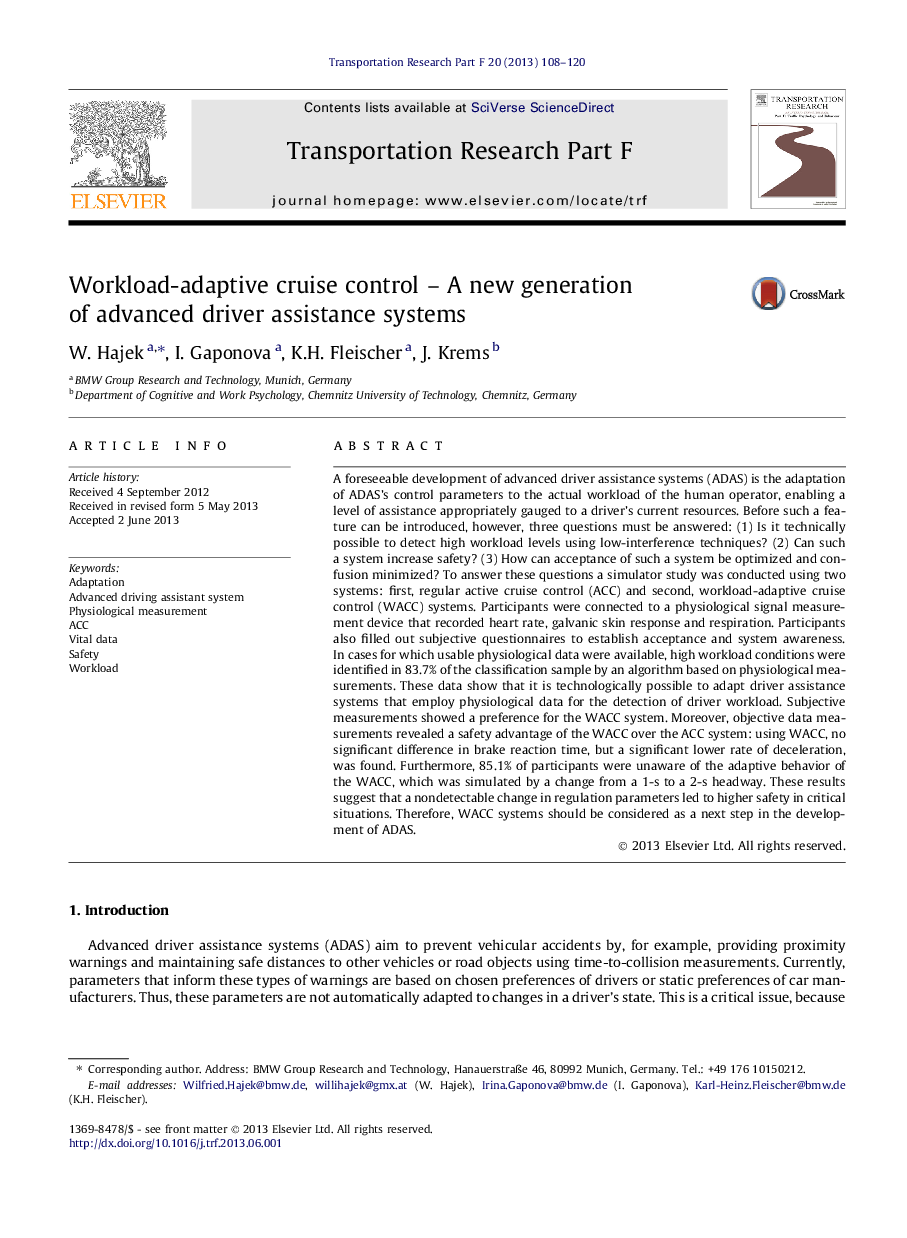| کد مقاله | کد نشریه | سال انتشار | مقاله انگلیسی | نسخه تمام متن |
|---|---|---|---|---|
| 897795 | 1472460 | 2013 | 13 صفحه PDF | دانلود رایگان |

• A new active cruise control system was created with workload as input parameter.
• Physiological parameters were measured for developing a workload algorithm.
• Correct detection for 83.7% of high workload sequences with valid physiological data.
• Workload adaptive cruise control showed a higher acceptance rating.
• People did not detect the changes but the systems increased security.
A foreseeable development of advanced driver assistance systems (ADAS) is the adaptation of ADAS’s control parameters to the actual workload of the human operator, enabling a level of assistance appropriately gauged to a driver’s current resources. Before such a feature can be introduced, however, three questions must be answered: (1) Is it technically possible to detect high workload levels using low-interference techniques? (2) Can such a system increase safety? (3) How can acceptance of such a system be optimized and confusion minimized? To answer these questions a simulator study was conducted using two systems: first, regular active cruise control (ACC) and second, workload-adaptive cruise control (WACC) systems. Participants were connected to a physiological signal measurement device that recorded heart rate, galvanic skin response and respiration. Participants also filled out subjective questionnaires to establish acceptance and system awareness. In cases for which usable physiological data were available, high workload conditions were identified in 83.7% of the classification sample by an algorithm based on physiological measurements. These data show that it is technologically possible to adapt driver assistance systems that employ physiological data for the detection of driver workload. Subjective measurements showed a preference for the WACC system. Moreover, objective data measurements revealed a safety advantage of the WACC over the ACC system: using WACC, no significant difference in brake reaction time, but a significant lower rate of deceleration, was found. Furthermore, 85.1% of participants were unaware of the adaptive behavior of the WACC, which was simulated by a change from a 1-s to a 2-s headway. These results suggest that a nondetectable change in regulation parameters led to higher safety in critical situations. Therefore, WACC systems should be considered as a next step in the development of ADAS.
Journal: Transportation Research Part F: Traffic Psychology and Behaviour - Volume 20, September 2013, Pages 108–120